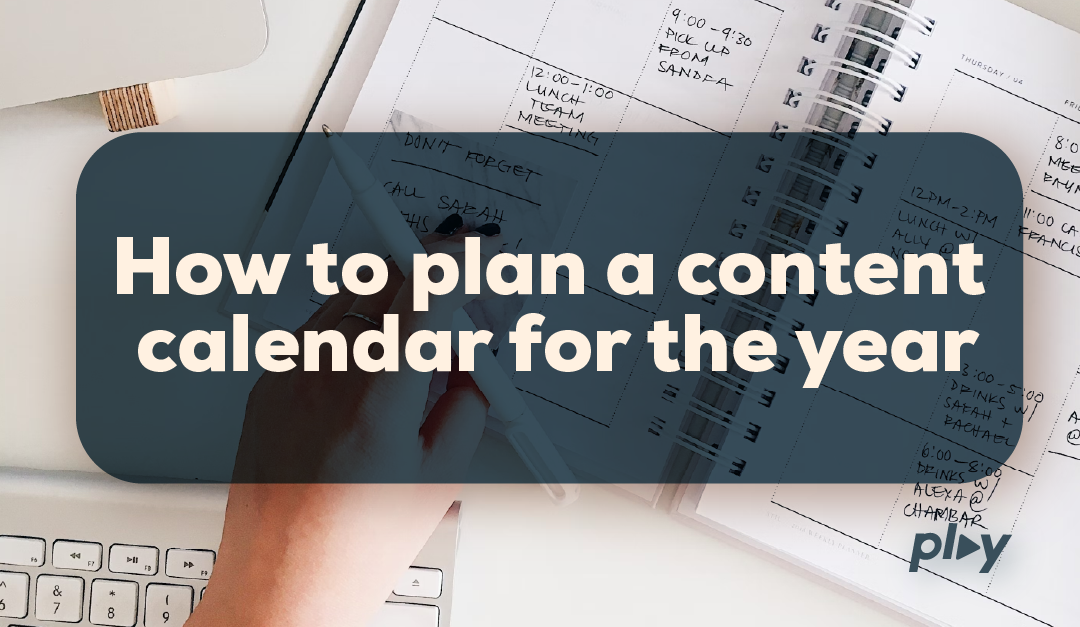How to Plan a Content Calendar for 2025: Actionable Steps from a CEO

Creating a content calendar for 2025 isn’t just about organizing posts; it’s about building a results-driven roadmap that aligns with your business goals and captivates your audience. Here’s a step-by-step guide packed with actionable tasks to get started.
1. Define Business Goals and Audience Priorities
- Action Item: Write down your top 3 business objectives for 2025 (e.g., increase leads by 20%, launch a new product, or expand into a new region).
- Action Item: Conduct a survey or review customer feedback from 2024 to update your audience personas.
- Action Item: Use Google Analytics and CRM tools to identify the top-performing content types and topics from 2024.
Tool Tip: Use a spreadsheet to cross-reference audience preferences with business goals, ensuring your content serves both.
2. Establish Key Content Themes
- Action Item: Analyze search trends using tools like Google Trends, AnswerThePublic, and BuzzSumo to identify emerging topics in your industry.
- Action Item: Divide content into 3-5 main themes (e.g., sustainability, innovation, or customer success stories).
- Action Item: Create a priority list of these themes and tie each one to specific quarters or campaigns.
Example: A SaaS company might focus on AI advancements in Q1 and data security in Q3.
3. Build a Flexible Calendar Framework
- Action Item: Use a project management tool like Trello, Asana, or Notion to create your calendar.
- Action Item: Schedule content into three categories:
- Planned Content: Regular blogs, newsletters, and videos.
- Reactive Content: Reserve slots for trend-based posts or breaking news.
- Evergreen Content: Timeless posts that maintain relevance.
- Action Item: Include buffer time to review and optimize drafts before publishing.
Visual Guide: Use a color-coded system to differentiate planned, reactive, and evergreen content.
4. Plan for Multi-Channel Distribution
- Action Item: For each piece of content, map out where and how it will be shared (e.g., blog post -> email campaign -> social snippets).
- Action Item: Customize content formats for different platforms (e.g., infographics for Instagram, thought leadership articles for LinkedIn).
- Action Item: Incorporate emerging formats like short-form video or interactive content.
Pro Tip: Repurpose one high-quality asset into at least three different formats to maximize ROI.
5. Align Content with Key Dates and Industry Events
- Action Item: Mark important holidays, awareness months, and industry events on your calendar.
- Action Item: Plan campaigns around these dates. For example, a health brand could leverage New Year’s resolutions or National Nutrition Month.
- Action Item: Schedule promotional content at least 6 weeks in advance to allow for production and approvals.
Visual Example: Use a timeline to highlight high-priority months and content peaks, ensuring even distribution.
6. Measure, Analyze, and Adapt
- Action Item: Set monthly review meetings to assess content performance using tools like Tableau or Google Data Studio.
- Action Item: Track metrics such as traffic, engagement, conversions, and ROI. Create a simple dashboard to summarize these insights.
- Action Item: Adjust your calendar based on real-time feedback—focus more on what works and pivot from underperforming strategies.
Pro Tip: Use A/B testing to refine headlines, visuals, and CTAs for better results.
7. Assign Responsibilities and Streamline Workflow
- Action Item: Assign clear roles for content creation, editing, publishing, and performance tracking.
- Action Item: Use workflow automation tools like Zapier to reduce manual tasks (e.g., automatically share new blog posts on social media).
Action Item: Create a content approval checklist to ensure consistency and quality.
Final Thoughts: Think Big, Plan Small
A content calendar is more than just a plan; it’s your strategy in action. Break down ambitious goals into manageable tasks, use data to inform every step, and remain flexible to adapt to the unpredictable nature of digital marketing. By following these steps, you’ll not only plan for 2025 but also set your business up for long-term success.
Are you ready to take action? Let’s make 2025 your most strategic year yet.
